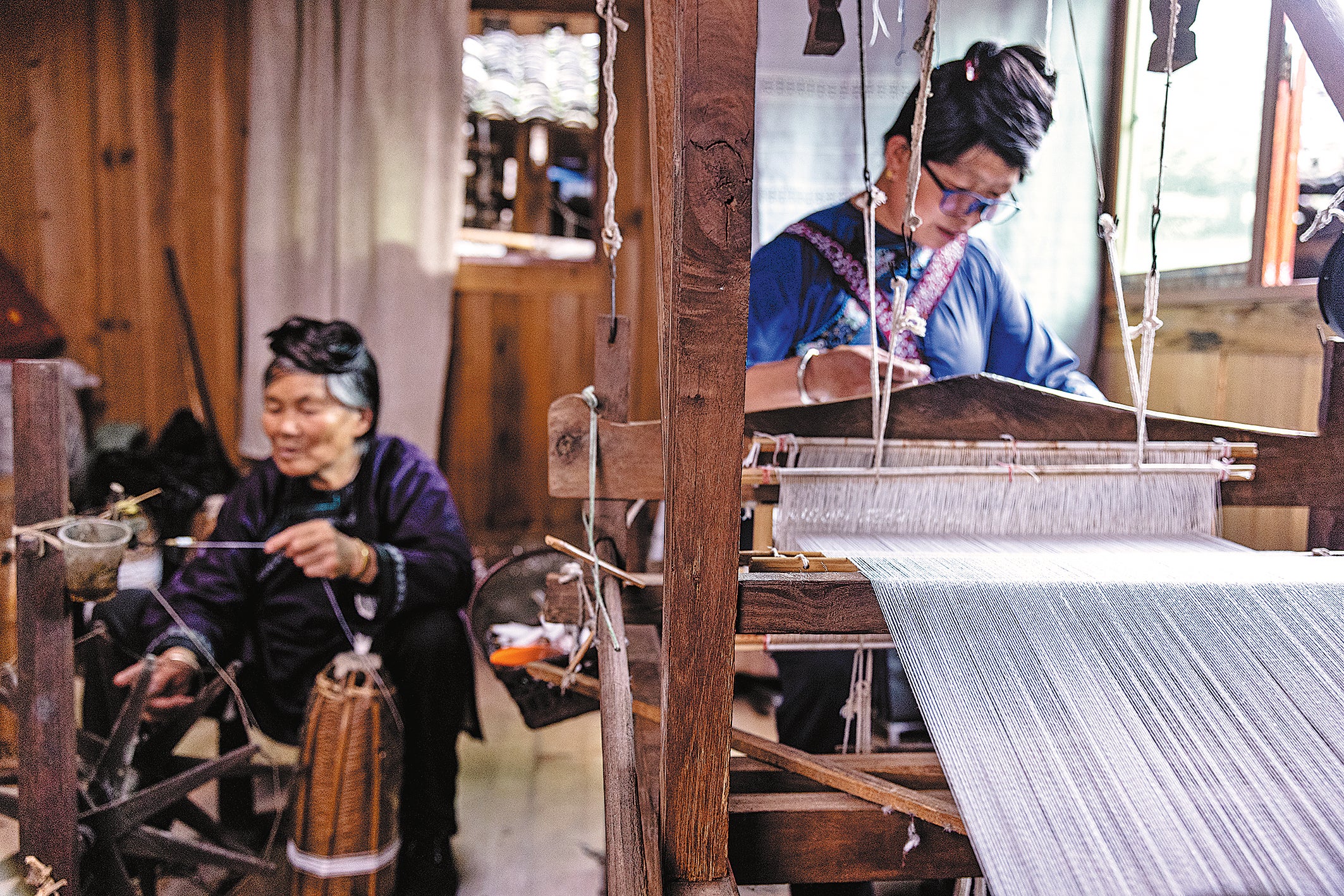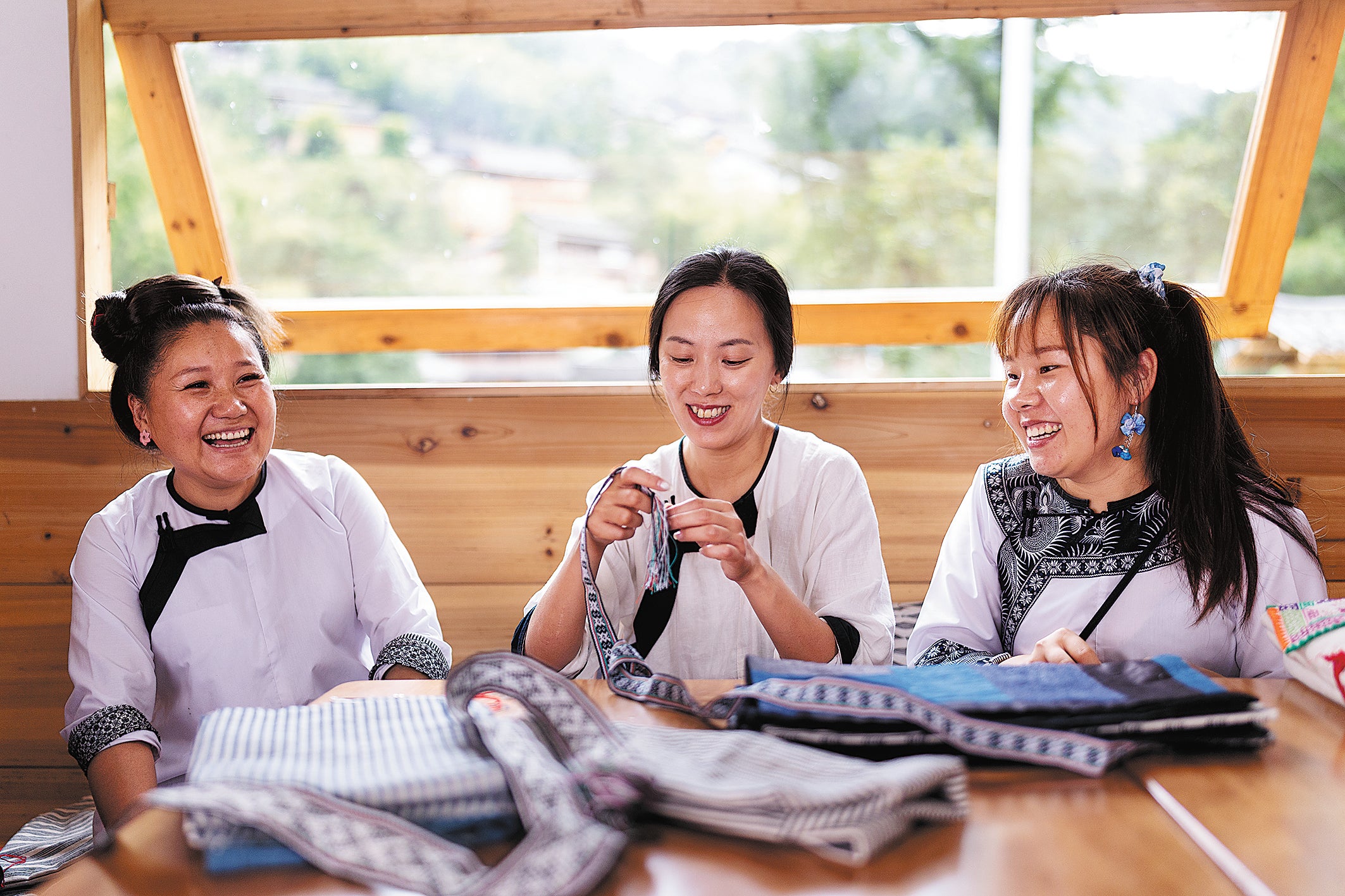A tradition worth dyeing for
THE ARTICLES ON THESE PAGES ARE PRODUCED BY CHINA DAILY, WHICH TAKES SOLE RESPONSIBILITY FOR THE CONTENTS

Ethnic costumes in China combine rich colours and patterns with style, and their distinctive beauty and grace dazzle people entering a village inhabited by the Dong ethnic group. If they do, they may be fortunate enough to see women making monochromatic dark blue fabric with a metallic sheen that they themselves wear.
It is known as liangbu (bright cloth), a special textile that takes a dozen steps to make, and which is a glittering example of handmade Dong cloth.
Located primarily in Guizhou, Hunan and Hubei provinces, and the Guangxi Zhuang autonomous region, the Dong people have developed a trove of arts and crafts over the centuries, among them Grand Song (dage), and wooden architectural structures, such as drum towers and covered wind and rain bridges.
Their traditional dress-making craftsmanship is recognised as a form of national-level intangible cultural heritage, and apparent upon entering a Dong village.
The costumes are mostly made of the Dong cloth, which is a gift of nature, dyed a dark, rich blue, using wild plants to make indigo. Both finished cloth and cotton threads are dyed. The former becomes liangbu, while the dyed threads are often woven with white threads to create a variety of patterns.
For the Dong people, liangbu has a range of meanings. It is an embodiment of life experience, as well as of wisdom derived from nature, and it helps them cope with cool, moist weather. It continues a time-honoured tradition of handicrafting. And it is also a bond connecting family members across generations.

“As a child, I often heard my mother saying that girls needed to learn to make Dong cloth, and that anyone who didn’t know how was considered incapable,” says Yang Shenghua, a resident of Dali Dong village in Rongjiang county, Guizhou’s Qiandongnan Miao and Dong autonomous prefecture.
The 55-year-old began to learn the craft when she was about 12, under the guidance of her mother Yang Xiuying. She remembers that the process, which begins with spinning thread, was rather difficult for a young girl to learn.
“I learned to weave a metre, and another metre, until I was able to produce a piece as long as my mother could make. I also went to the mountains to pick banlangen (indigo woad root, Isatis indigotica), an essential ingredient in preparing the dye for the cloth,” she says.
The finished dye is made using water from boiled cowhide, and egg whites. The cloth is wrung, scrubbed and pounded, before it is turned into traditional Dong garments — dark indigo outfits with a colourful flower trim for the women, plain for the men.
In Dong villages, a mother traditionally gives liangbu as a wedding gift to her daughter, and when the daughter later gives birth, the grandmother usually gifts her a woven patterned baby carrier.
After Yang Shenghua married, she had less and less time for weaving. Then, one day, an architect changed everything.
Jenny Chou visited Dali Dong village for the first time in the autumn of 2015 on a business trip. She happened to see villagers harvesting indigo and soaking it in vats to make dye.
Inspired, she went on to found the Dousa Women’s Cooperative, which allows the women of Dali Dong village to not only continue the traditional craft, but also to experiment.
“I’ve never felt that the traditional and the modern are opposed. What is modern today will someday become a part of tradition,” Chou says.
Yang Shenghua was among those who signed up for the courses at the cooperative, which she says allowed her to once again experience the joy of making cloth.
“The craft was passed on from my grandmother to my mother, and then to me. It used to be something that I was told to do.... Now it is something I like doing, because it is part of our tradition and culture.”

Bookmark popover
Removed from bookmarks